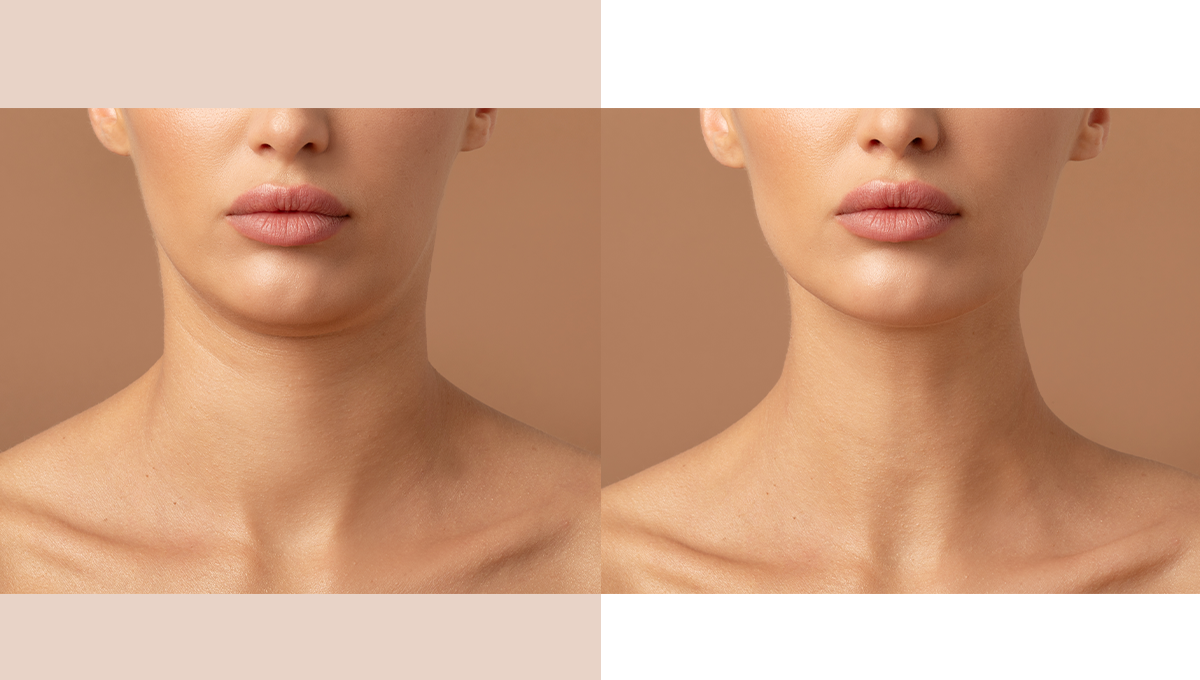
Are you on the quest for a more radiant-looking skin? You are not alone! Everyone craves that celebrity-like flawless skin. Fortunately, technological advancements have made it easier for you to enjoy a youthful glow in no time. Enter laser skin resurfacing!
With ample types of laser skin resurfacing options out there, the right treatment (ablative laser vs non ablative laser) may seem difficult to choose. Worry not! This blog guides you in the right direction. We will explore the two types of laser skin resurfacing, which are ablative and non-ablative.
Knowing the difference between ablative vs. non-ablative laser skin resurfacing helps you make an informed decision.
Brief History of Laser Use in Facial Skincare
The journey of lasers in skincare began in the early 1960s with the invention of the ruby laser. These early innovations paved the way for a revolution in facial rejuvenation. While initially powerful, these lasers often required significant downtime due to their ablative nature (removing the top layer of skin).
Modern advancements have brought us a new era of laser technology. Today's devices offer more precise control and a wider range of wavelengths. They allow for targeted treatments with minimal downtime. This evolution has transformed laser skincare from a one-size-fits-all approach to a finely tuned instrument. This can address specific concerns, and promote a more youthful and radiant appearance.
Overview of Ablative Laser Skin Resurfacing
How Does Ablative Laser Work?
Ablative CO2 laser skin resurfacing is an effective way to get flawless skin. How does ablative laser facial work? It uses concentrated beams of light to remove the outer layers of your skin. This prompts the production of new collagen and elastin. These are naturally occurring protein components responsible for new skin tissue growth.
Benefits:
-
Ablative lasers effectively address deeper concerns like deep wrinkles, sun damage, and severe acne scars.
-
It stimulates collagen production at a deeper level.
-
Ablative treatments can produce dramatic effects and longer-lasting results compared to non-ablative methods.
Side Effects:
-
Due to deeper penetration, ablative lasers typically require a longer recovery period.
-
You may experience redness, swelling, and potential crusting for a week or so.
-
Scarring may happen, especially for those with darker skin tones.
Recovery Time:
Healing after ablative laser resurfacing can take anywhere from 4-6 weeks. It actually depends on the depth of your treatment, treated area, and your skin type. Follow the post-care instructions for optimal results.
Use Cases:
C02 Laser Resurfacing Machine is the most powerful ablative laser that offers dramatic results for severe skin issues. You can also opt for erbium lasers for more precise control. They offer a slightly shorter recovery time compared to CO2 lasers.
Ablative Laser Before and After:
You may notice dramatic improvements in skin texture, tone, and wrinkle reduction within a few months. The results are truly transformative. You will be surprised to witness that much-needed glow after one session.

Overview of Non-ablative Laser Skin Resurfacing
How Does Non-ablative Laser Work?
Non-ablative laser skin resurfacing is a gentler way to achieve a youthful glow. Unlike its ablative counterpart, this technique does not remove the top layer of skin. Instead, it utilizes targeted beams of light to gently heat the underlying tissue. This stimulates the production of collagen and elastin, which promotes skin rejuvenation from within.
Benefits:
-
Non-ablative lasers address subtle concerns like fine lines, wrinkles, uneven skin tone, and mild acne scars.
-
Since the surface layer remains intact, CO2 laser recovery is significantly faster compared to ablative lasers.
-
Non-ablative laser treatment for face is suitable for all skin types.
-
It comes with a lower risk of scarring.
Effectiveness:
Non-ablative laser treatment does not provide as dramatic results as ablative treatments. But you will notice a gradual, yet noticeable improvement in skin texture and tone. The treatment is ideal for those who want to address the early signs of aging.
Side Effects:
Non ablative fractional laser skin resurfacing treatment is mild on your skin. You may experience temporary side effects. This usually subsides within a few hours.
Recovery Time:
The beauty of non-ablative lasers is their short recovery time. You may resume your regular activities within a day or two.
Use Cases:
-
IPL (Intense Pulsed Light) devices target various skin concerns like sun damage and uneven pigmentation.
-
Fractional lasers stimulate collagen production without harming surrounding tissue.
Non-Ablative Laser Before and After:
Patients notice visible improvements in skin texture and tone. The results are typically noticeable within a series of non-ablative laser treatments. At the end of the sessions, you will walk out more confident with naturally radiant skin.

Detailed Comparison of Ablative vs Non Ablative Lasers
Ablative versus Non Ablative Lasers: Which Type of Laser Treatment is Right For You?
Choosing between ablative and non-ablative lasers depends on your skin concerns. Understand the key difference between ablative and non-ablative lasers to make an informed decision.
What Does Ablation Do?
If you need to address deep wrinkles, severe acne scars, or sun damage, ablative lasers might be the way to go. And the treatment works great for those with fair to light skin tones. The recovery rate is longer, but the results are worth waiting for.
Should You Opt for Non-Ablation?
If your concerns are as minimal as fine lines or mild damage from the sun, the non-ablative laser is your best bet. The best part? The treatment suits all skin types and there is low risk of side effects.
FAQs Section
What is the meaning of ablative laser?
Ablative lasers mean an invasive or surgical laser treatment. Here intense wavelengths of light are used to treat a number of skin concerns. The laser works to remove the epidermis (skin) and heat the underlying tissue. This results in the growth of collagen fibers.
What is Fractional C02 Laser treatment?
Fractional CO2 laser is one type of less powerful non-ablative esthetic level treatment, compared to ablative C02 laser resurfacing. It delivers concentrated light in microscopic columns to stimulate collagen production in the skin. The laser does not hurt the surrounding tissue. But it fosters healing in the skin.
Which is more painful between ablative and non-ablative lasers?
Non-ablative lasers are less painful than ablative lasers. This is because they do not remove the skin. Ablative lasers, on the other hand, require anesthesia as it involves skin removal.
Is there any downtime required for non-ablative laser treatments?
The beauty of non-ablative lasers is their minimal downtime! You are free to resume your daily routine within a day or two.


